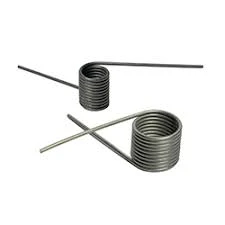
- Mobile Phone
- +8613931874955
- sales@cntcmetal.com
Innovative Designs for Micro Compression Springs in Precision Engineering Applications
Understanding Micro Compression Springs Applications and Innovations
Micro compression springs are small, yet crucial components in various industries, playing a pivotal role in the functioning of diverse mechanical systems. These miniature springs possess remarkable capabilities that make them essential in applications ranging from medical devices to electronics. In this article, we will explore the design, manufacturing, applications, and innovations of micro compression springs, highlighting their significance in modern engineering.
What are Micro Compression Springs?
Micro compression springs are tightly coiled helical springs designed to offer resistance against axial loads. They are characterized by their small diameter and short length, typically measuring less than half an inch in size. Despite their diminutive stature, these springs can exert significant force and are capable of compressing under load to yield exceptional performance in confined spaces.
Design Considerations
Designing micro compression springs requires a profound understanding of materials, mechanical properties, and precise manufacturing techniques. Common materials used in their production include stainless steel, music wire, and various alloys that enhance strength and corrosion resistance. The choice of material is critical, as it influences the spring's operational durability, fatigue life, and suitability for specific environments, particularly in medical and electronic applications.
The design process also involves calculating spring constants, load capacities, and the number of coils to ensure that the springs meet the specific requirements of their intended applications. Advances in computer-aided design (CAD) and finite element analysis (FEA) aid engineers in optimizing the spring design for performance and reliability while minimizing production costs.
Manufacturing Techniques
The production of micro compression springs requires specialized manufacturing techniques given their intricate specifications. Precision coiling is a common method where fine wire is wound around a mandrel to form the helical shape. Advanced techniques such as CNC (Computer Numerical Control) machining are often employed to achieve high tolerances and ensure uniformity across batches.
micro compression springs

Additionally, processes like heat treatment and surface finishing are applied to enhance the springs' mechanical properties and resistance to wear and tear. These manufacturing processes must adhere to stringent quality control standards to ensure that every spring performs as expected, especially in critical applications where failure could have serious repercussions.
Applications in Various Sectors
Micro compression springs find extensive use across various sectors due to their versatility. In the medical field, they are integral to devices like syringes, inhalers, and dental tools, where they provide the necessary force in compact designs. Their reliability is crucial in ensuring consistent performance in life-saving treatments and devices.
In the electronics industry, micro compression springs are widely used in applications such as keyboards, circuit breakers, and sensors. Their compact nature allows manufacturers to design smaller, more efficient devices without compromising functionality. Furthermore, they can be utilized in automotive applications, where they play a role in safety devices, suspension systems, and electronic control units.
The precision and reliability of micro compression springs make them indispensable in aerospace applications as well. From securing components to actuating mechanisms, these springs operate under substantial pressures and extreme conditions, proving their worth in critical systems that demand high performance and safety.
Innovations and Future Trends
As technology evolves, the demand for precision-engineered components like micro compression springs continues to grow. Innovations in materials science, such as the introduction of smart materials and composite alloys, promise to enhance the performance characteristics of these springs even further.
Moreover, advancements in 3D printing technologies and additive manufacturing open new avenues for producing customized micro springs with complex geometries that were previously unattainable. This not only streamlines production processes but also allows for rapid prototyping, leading to quicker iterations of design and deployment.
In conclusion, micro compression springs are often overlooked yet vital mechanical components that play an essential role in various industries. Their unique design, manufacturing techniques, and versatility underscore their importance in today's technology-driven world. As industries continue to innovate, the future of micro compression springs looks promising, with evolving applications and enhancements that will further solidify their presence in the engineering landscape.
share:
-
Wall Ties for Concrete: Invisible Guardians of Building Structural StabilityNewsAug.08,2025
-
Timber Frame Wall Ties: Stable Bonds for Load TransmissionNewsAug.08,2025
-
Stainless Steel Woven Wire Mesh: A versatile material from boundary protection to functional supportNewsAug.08,2025
-
Powder Coat Coil Springs: Creating peace of mind and reliability with sturdy protectionNewsAug.08,2025
-
Floor Standing Sign Holder: A Powerful Assistant for Flexible DisplayNewsAug.08,2025
-
Binding Iron Wire: An Invisible Bond for Building StabilityNewsAug.08,2025
-
Yard Sign Stakes: Reliable Guardians of Outdoor SignsNewsAug.04,2025



















